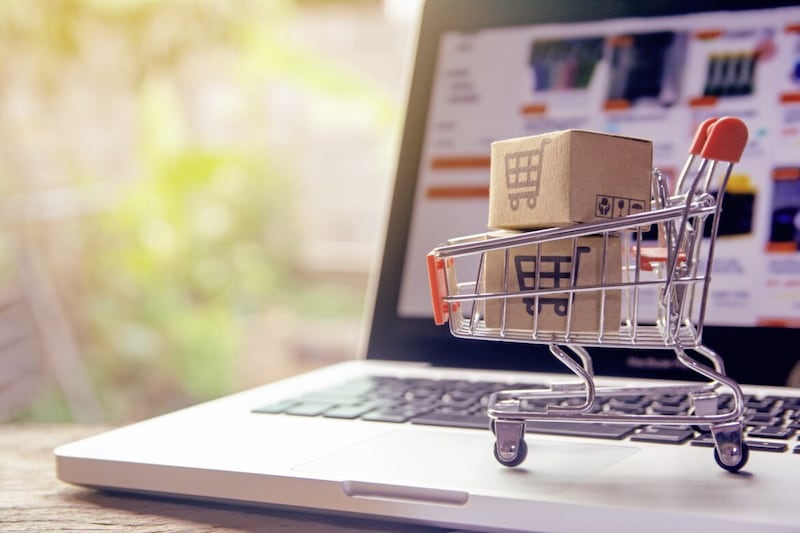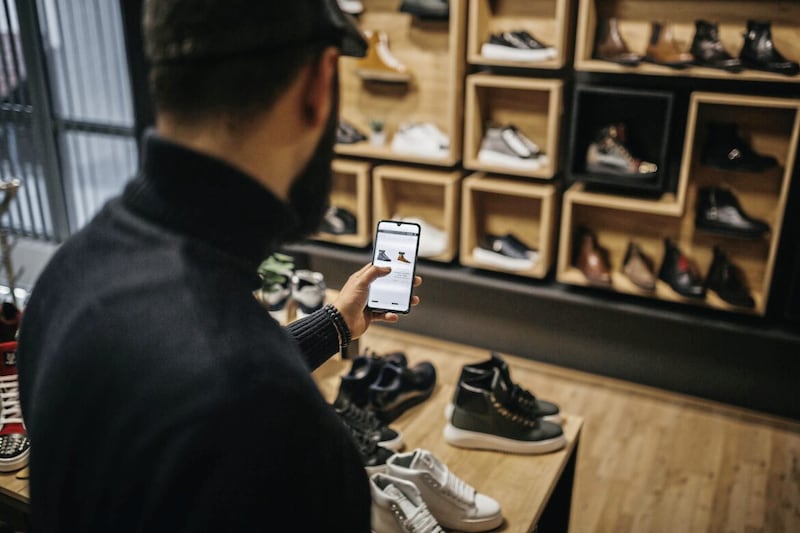I WAS reminded of a scene from the Tom Cruise movie Minority Report, when reading a new study just published by Barclays Corporate Banking on retail trends. In the movie, Tom’s character is seen walking through a bricks-and-mortar shopping mall, with ads tailored personally to him in shop windows, and a digital shop-assistant in a GAP store popping up to help him select new clothing.
This vision was fascinatingly futuristic back then (2002, believe it or not) but now this hybrid cyber-shopping experience feels really quite close. With online retail ever popular, what does this evolution mean for the sector, for the high street, and what is the future of bricks-and-mortar retail?
Perhaps more than any other sector over the past two years, retail has been forced into a period of accelerated evolution. The pandemic drove everyone online, and now the rising cost-of-living is increasing business outgoings while reducing consumer spending.
Encouragingly for Northern Ireland’s retail sector, the Barclays study – ‘What’s in store for retail?’ – reveals that businesses here are adapting their sales models to weather these financial storms as effectively as possible.
Links between digital and physical shopping are evolving, which are opening up new opportunities and ways to generate income. Most notably, the report reveals that click-and-collect shopping, where goods are bought online but picked up from a physical store, will be worth £1.34bn2 in Northern Ireland this year.
The growth of click-and-collect in Northern Ireland follows the broader national trend that has seen this new hybrid sector of the economy swell to be worth over £42.4bn in the UK this year – a significant 8.4 per cent of the industry’s total annual income.
The popularity of the service grew during the pandemic but, unlike pure online sales which peaked during that period, it has continued to grow post the lifting of lockdown restrictions, indicating that click-and-collect is a consumer behaviour that is here to stay. This phenomenon now accounts for 39.2 per cent of sales for retailers who offer the service in Northern Ireland, up from 27.3 per cent a year ago.
The click-and-collect economy now underpins 3,600 jobs across the industry in Northern Ireland and almost a third of physical stores in Northern Ireland (31.1 per cent) are now used as click-and-collect locations.
Online and physical retail sales channels are becoming more intertwined. Consumers in Northern Ireland like to research products online and in-store in equal measure across a number of products, including DIY equipment (36.2 per cent), electronics (35.7 per cent), entertainment (34.5 per cent), and sports or outdoor equipment (34.5 per cent).
Despite the increasing popularity of online shopping, there is still support for a physical store.
The research reveals that having both an online and physical presence can be advantageous for a retailer’s appeal. Almost a third (27.9 per cent) of consumers in Northern Ireland say they can be hesitant when buying from online-only brands, a figure which drops to less than 1 in 10 (6.6 per cent) when businesses also have a bricks-and-mortar outlet.
When asked whether there is a future for physical retail space, 82 per cent of consumers in Northern Ireland agreed that there is. However, there is a clear demographic split across the UK: just over half (54 per cent) of 16-24-year-olds believe in the future of the physical store, compared with almost three quarters (74 per cent) of over 55s.
What the report clearly spells out is that, following the inevitable acceleration in the shift to digital during the pandemic, consumers are now returning to stores to make their purchases with confidence, and trust in bricks and mortar stores is still strong.
What is also interesting is the question of the future location of retail outlets. While almost all (98 per cent) of the Northern Ireland retailers who took part in the study feel that a physical store is vital to their business success, the destination appears to be shifting. 60 per cent of retailers from Northern Ireland have reduced the number of stores they have in city centres, while almost a third (28.6 per cent) have increased their presence in retail parks.
An increased presence in retail parks will likely be popular with Northern Ireland shoppers, 26.7 per cent of whom say it is their preferred location for a store.
Retail futurists reading this with an eye on transformation may also be interested to learn that the report revealed that 41 per cent of Northern Ireland consumers want retail space to become more sustainable through more efficient energy use (e.g. turning lights off at closing), and 29.5 per cent would like to see more electric vehicle charging points. These experiential value-adds could give a useful edge to those planning changes to take advantage of this new hybrid retail world.
This changing retail dynamic has big implications for the future of our towns and cities across Northern Ireland. Property developers and retailers alike will be watching how these trends, which accelerated through the pandemic, continue to play out.
:: Adrian Doran is head of corporate banking for Barclays in Northern Ireland









